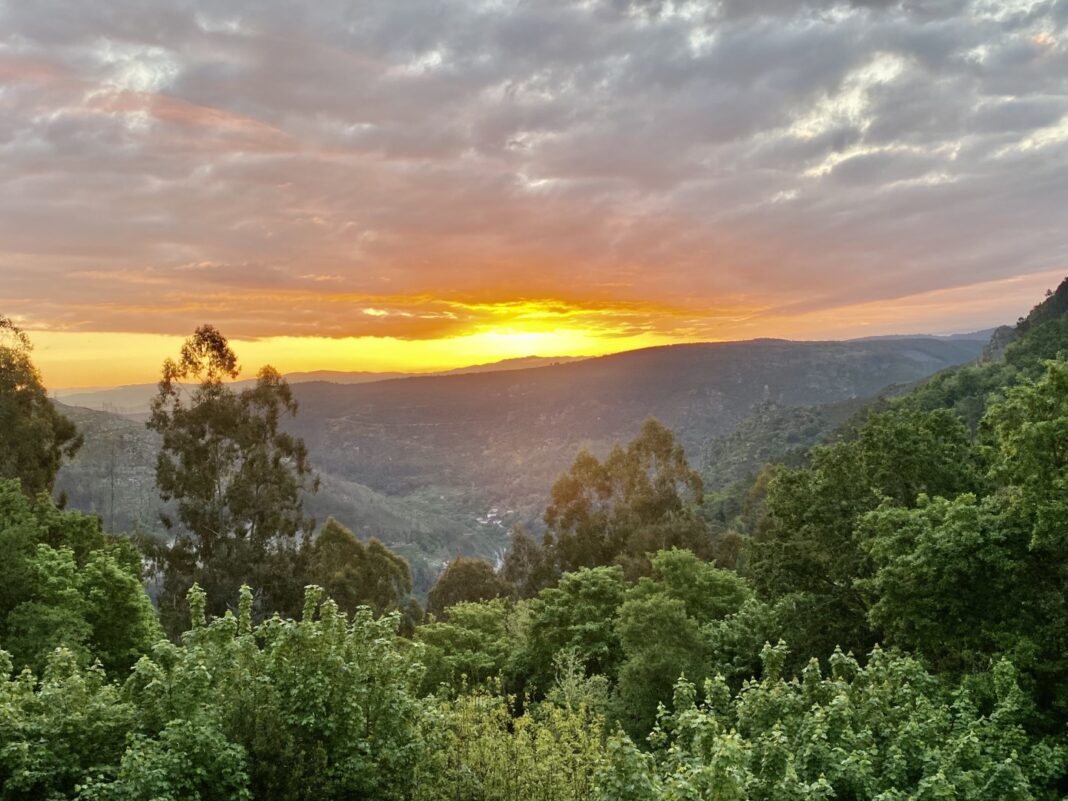Credit: Photos and article: Maureen Littlejohn
I touched down in Porto after a 6.5-hour flight from Canada, still shaking off the jet lag but already buzzing with anticipation. Ahead of me was Galicia, Spain’s northwestern corner—a land whispered about in legends, steeped in Celtic mysticism, and kissed endlessly by the Atlantic. The bus ride north took just two hours, crossing the River Miño into a landscape of granite peaks, oak forests, and terraced vineyards that seemed to tumble toward the sea.
From Porto, a bus whisked us two hours north, across the River Miño (a watery boundary between Portugal and Spain) and into Galicia—a lush, green hideaway. My guide, the ever-energetic and endlessly patient Maria Chamadoira, reminded us that Galicia is “the land of water.” And she wasn’t kidding: nine different companies bottle it, hot springs bubble up everywhere, and there are 1,500 kilometers of salty coastline. You can’t throw a scallop shell here without hitting some form of H₂O.
First Stop: Tui and the Wild Horse
Our maiden Galician town was Tui, a historic stop on the Camino de Santiago pilgrimage route that begins in Portugal. María explained that Galicia is not defined by one Camino but many. These include the Camino Francés, Camino Portugués, and Camino del Norte, and all converge at Santiago’s famed cathedral and the shrine of Saint James. Even for those who aren’t pilgrims, the rhythm of the Camino lingers in the stones, the streets, and the kitchens.
Our group was more focused on the pilgrimage of the stomach. Lunch was at O Novo Cabalo Furado—which translates to “The New Wild Horse.” The name is fitting, since the hills around Galicia still hold wild horses, rounded up every July during the Rapa das Bestas festival, when locals bravely (and barehandedly) trim their manes and tails.
At the restaurant, I dove headfirst into scallops—called zamburiñas—paired with a crisp Ribeiro wine made from the Treixadura grape.
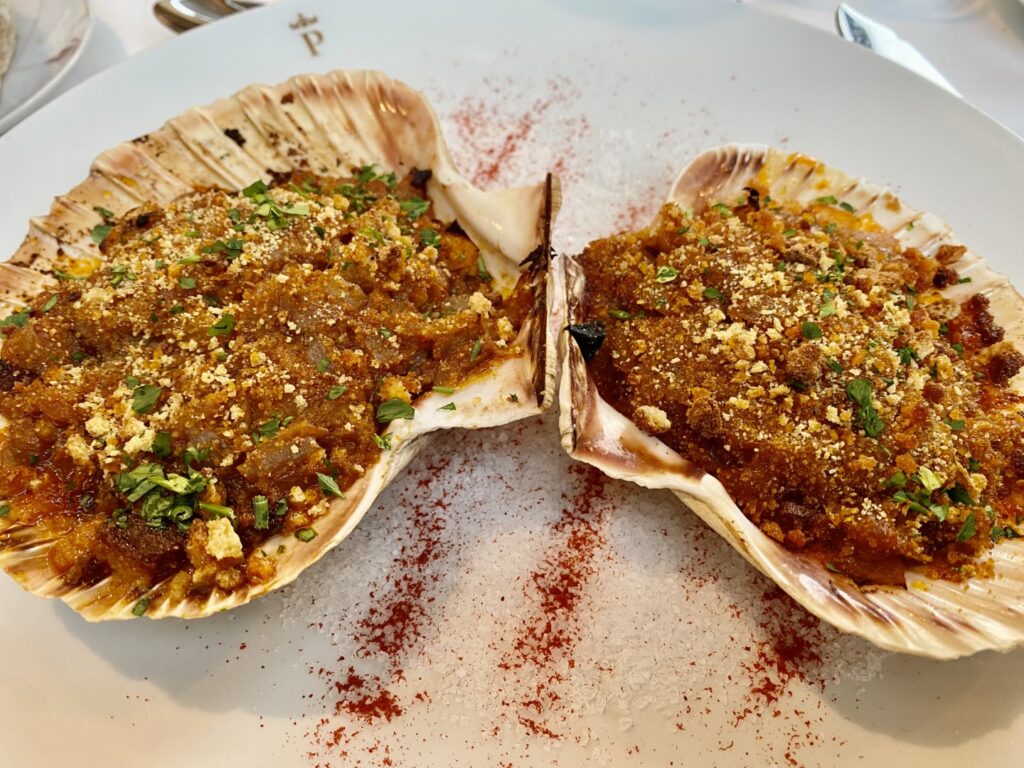
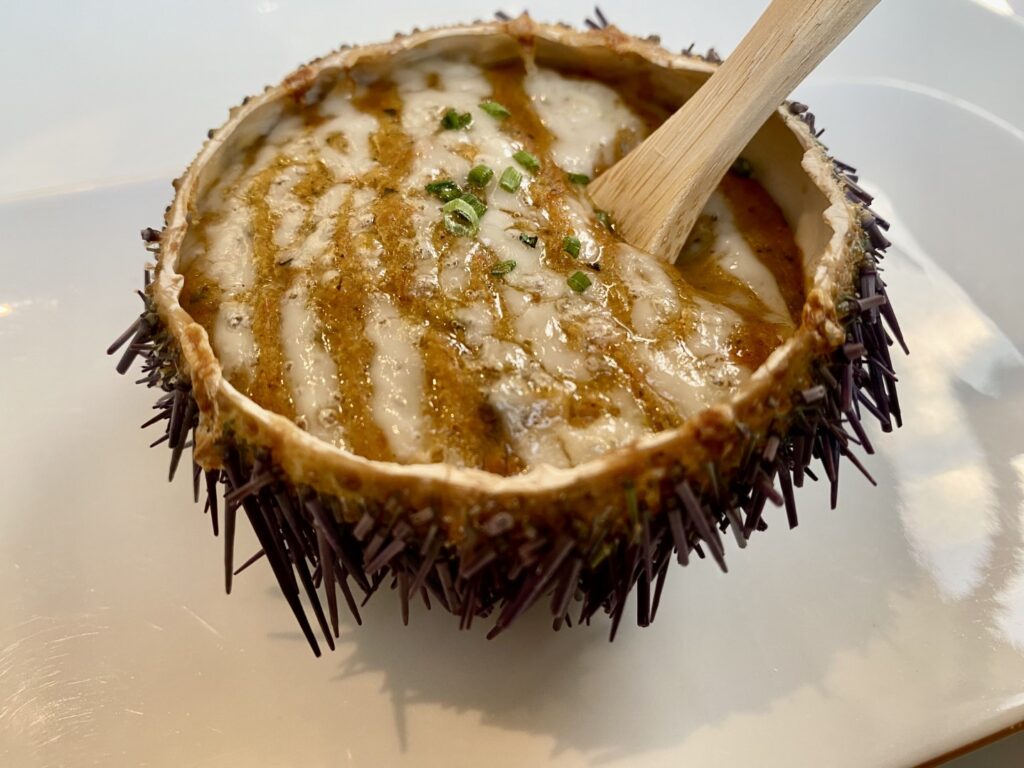
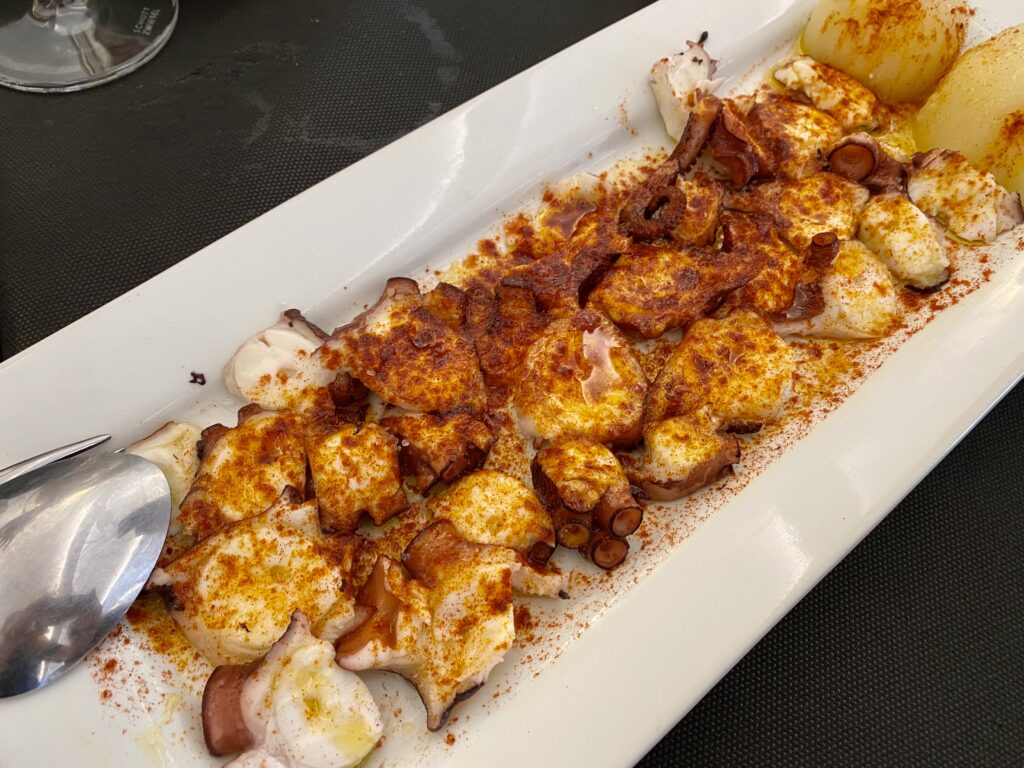
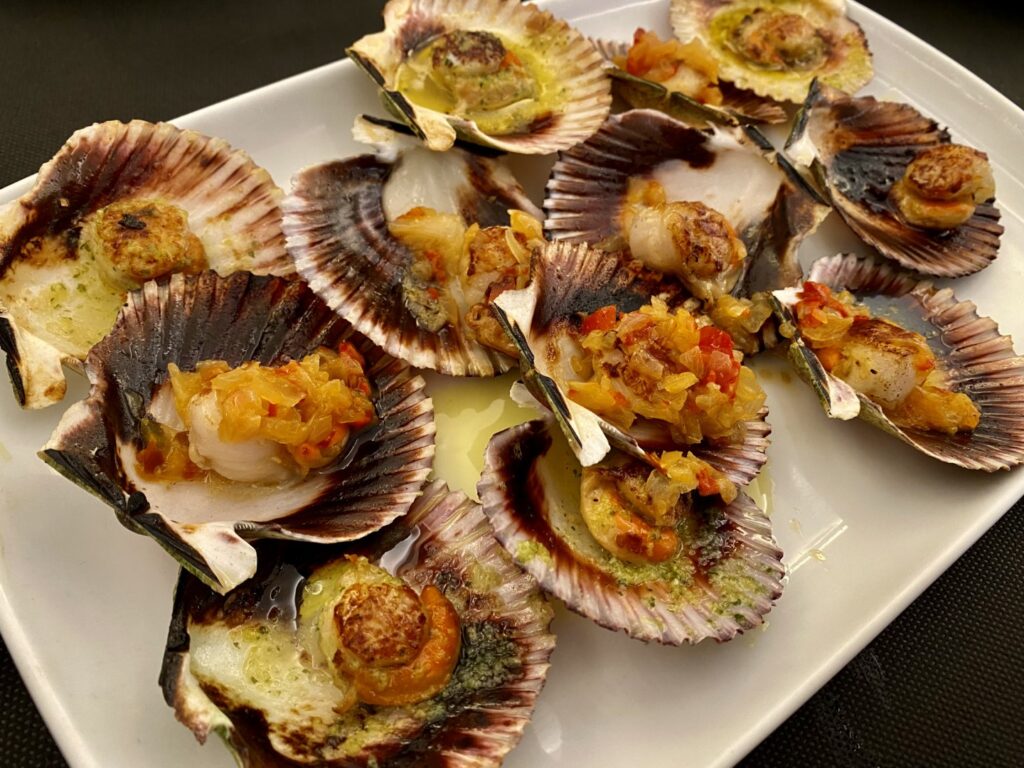
Then came the star of Galician cuisine: octopus. Pulpo a la gallega is simplicity perfected—boiled until tender, then dressed with olive oil, coarse salt, and a dusting of smoky paprika. It’s sliced into bite-sized coins and served on wooden plates, where it vanishes with alarming speed. Added to the meal were croquettes with creamy béchamel sauce and ham. Dessert was a Santiago cake made with almonds, sugar, eggs, and a sprinkle of powdered sugar outlining the cross of St. James.
I quickly realized two things: one, Galicians know how to eat; and two, lunch is a serious business. Restaurants open at 2 p.m., and by the time dessert rolls around, it’s late afternoon. Dinner? Don’t even think about it until 9 or 10 p.m. In summer, the sun doesn’t set until 10:30, so you basically follow the light around the clock.
Stone, Forests, and Sweet Chestnuts
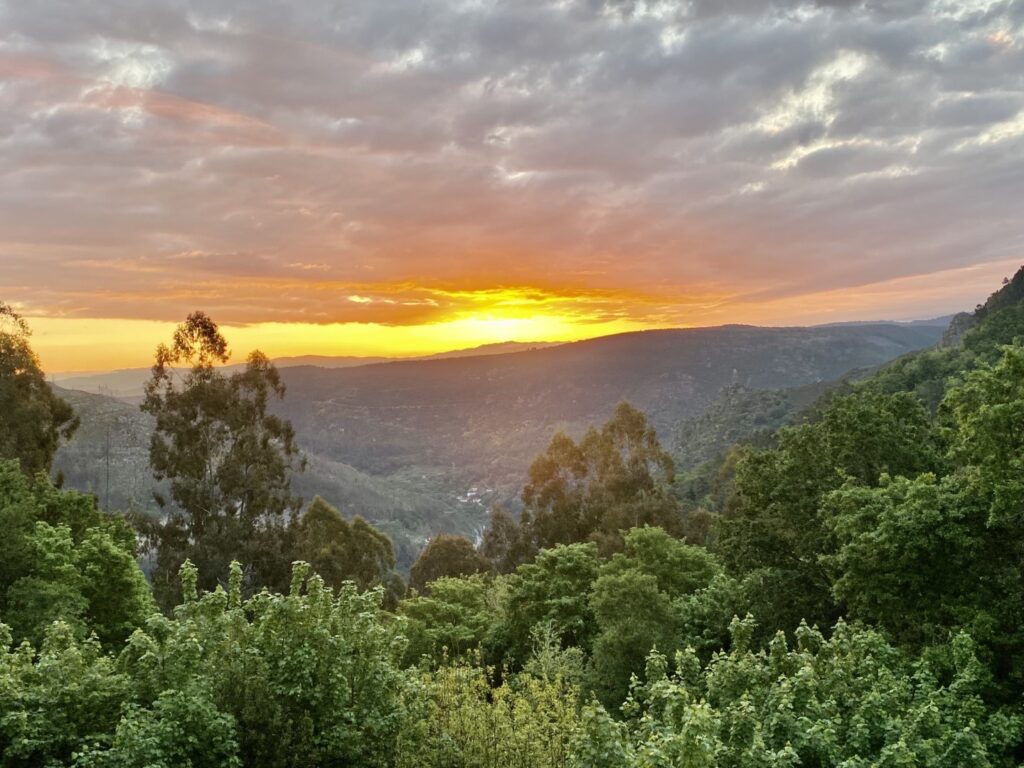
Waddling around Tui after lunch, I noticed something: everything here seems to be made of granite. The mountains are granite, the houses are granite, even the benches where I sat to recover from too much octopus were granite. Subway systems don’t exist here—not because Galicia is small, but because the granite makes drilling tunnels nearly impossible.
Surrounding us were oak and chestnut forests. Chestnuts are a big deal in Galicia—sweet, plentiful, and celebrated each autumn during harvest festivals. Locals used them as a starch before potatoes arrived from the New World.
Sleeping Like a Monk (Almost) at the Parador Santo Estevo
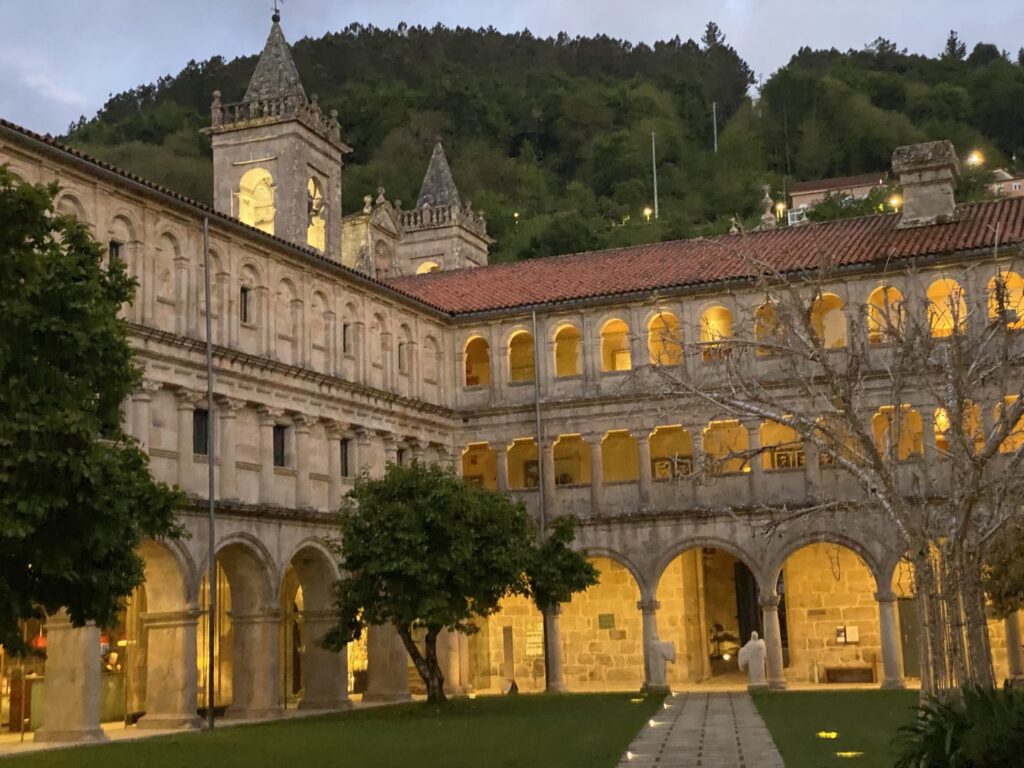
If Galicia has a secret magnet for luring visitors, it’s the paradores—historic castles, monasteries, and noble houses transformed into hotels. Our first stay was in the Parador Santo Estevo, a former Benedictine monastery tucked deep in the Ribeira Sacra region. Getting there wasn’t easy—our little bus squeezed through tight mountain roads—but once we arrived, the air shifted. The whole place radiated tranquility, as if the centuries of prayer and chestnut trees had seeped into the walls.
Inside, cloisters with Romanesque arches surrounded us, while the refectory (once where monks dined) now served dinner to grateful travelers like me. That night, I tried sea urchin scooped with a wooden spoon, and scallops baked in their shells with onion, breadcrumbs, and pimento. The food here feels both ancient and timeless, like the landscape itself.
Walking through the oak forest surrounding the parador the next morning, Maria told us of the Santa Compaña—ghostly processions of lost souls said to haunt these woods. If you meet them, she warned, give them a coin or risk having your soul snatched. I made a mental note to always keep spare change in my pocket—just in case.
Wine on the Edge
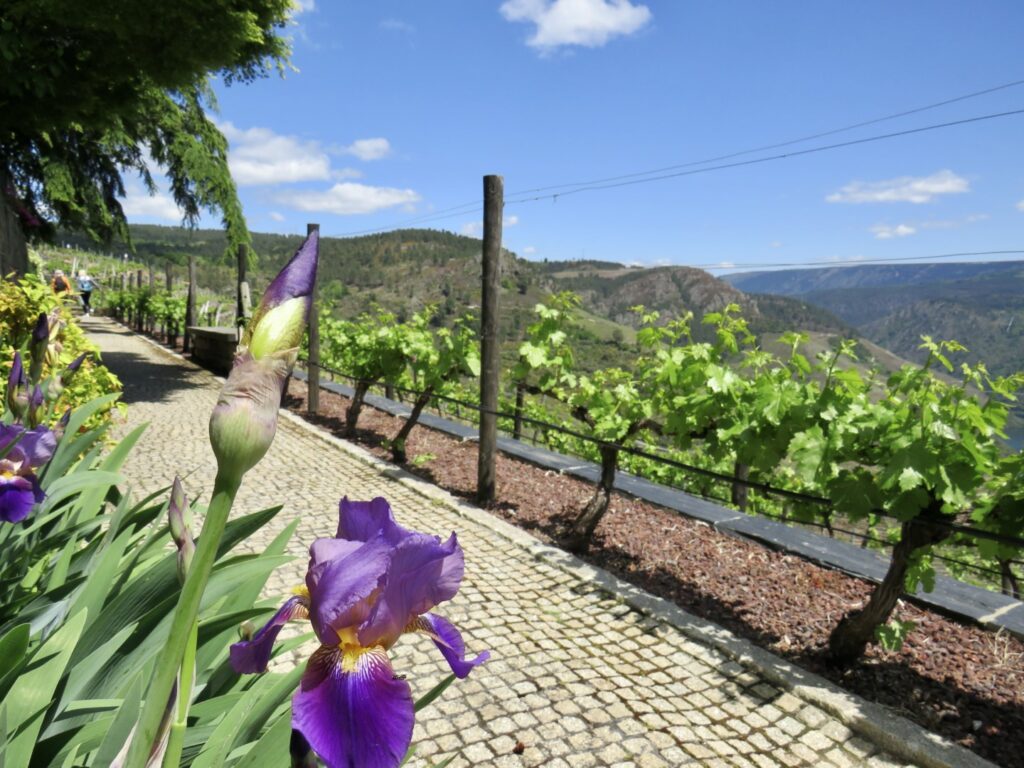
The Ribeira Sacra region is a landscape of heroic viticulture—literally. Vineyards cling to vertigo-inducing terraces along the Sil and Miño rivers, so steep that harvesters must scramble up and down carrying 20-kilo boxes of grapes. Locals call this “heroic” farming, and after seeing the cliffs, I understood why.
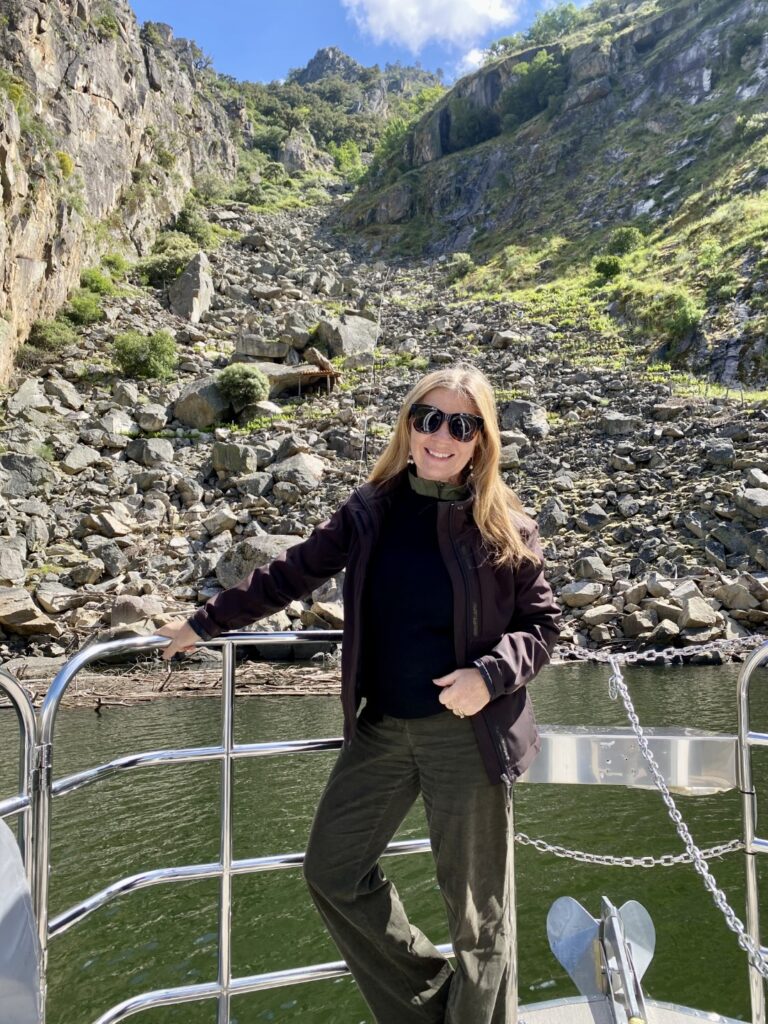
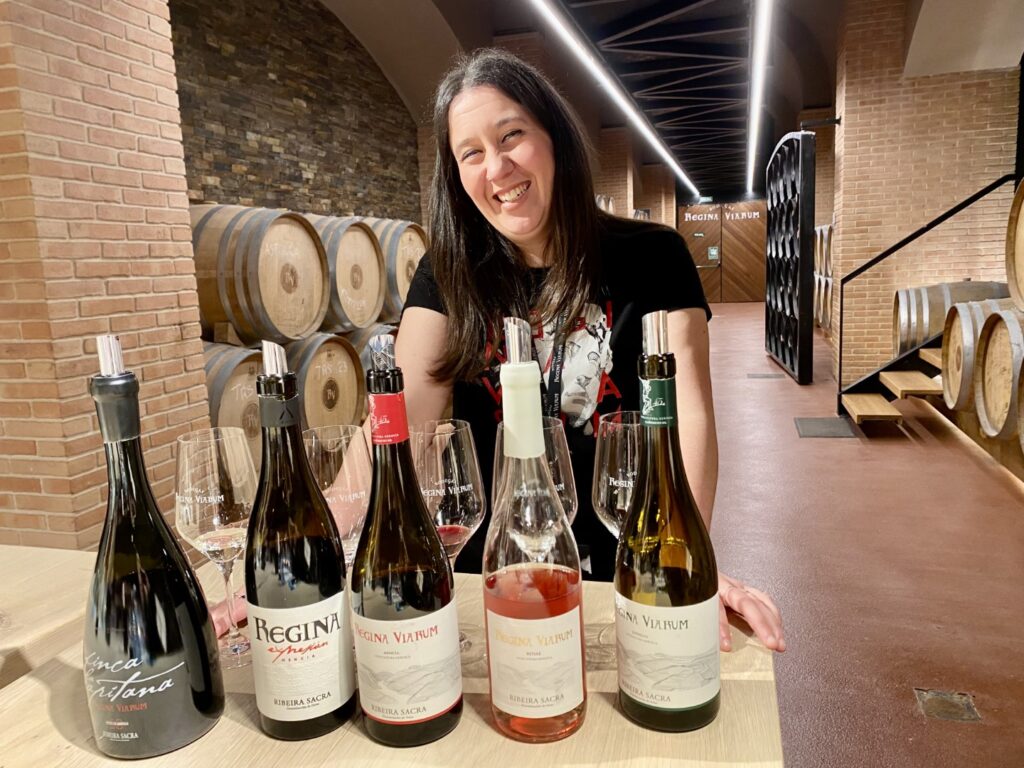
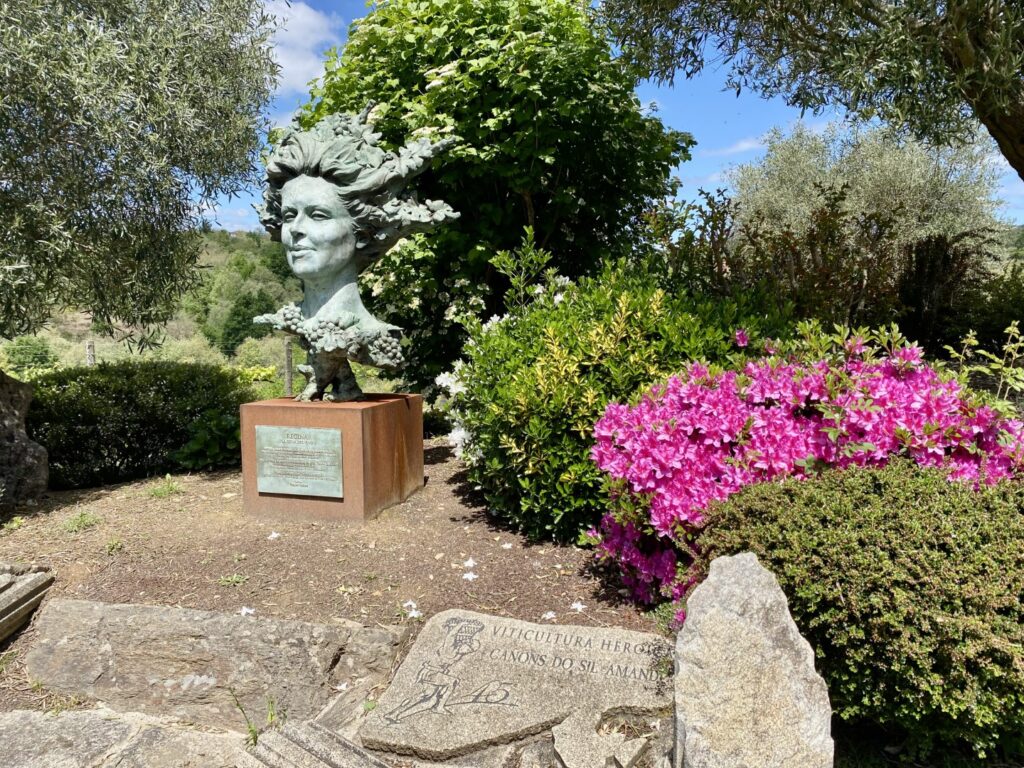
We boarded a river cruise with Captain Xoan Fraga, who poured us ruby-red Mencía wine as we floated past terraced vineyards. We nibbled on bica cake, a chestnut-sweetened sponge with a crunchy top, while our guide explained that over 50 grape varieties once thrived in the area. Many are being revived, though Mencía is still the headline act.
At Regina Viarum Winery, tasting guide Gema Abijón sat us down to sample their vintages.
“Our wines meet strict criteria. A minimum of 350 meters altitude, steep inclines, and all hand-harvested. That’s what makes them heroic wines.”
One sip and I found that to be deliciously so.
Lunch at Adega Algueira drove home Galicia’s “eat local” philosophy: empanadas stuffed with scallops and dogfish, veal shank with chestnuts, and flan with chocolate liqueur.
“Most families have animals and gardens here. We chop our own wood for fire. And we like to eat what we produce,” enthused restaurant manager Suso Somiera.
Myths, Magic, and Celtic Roots
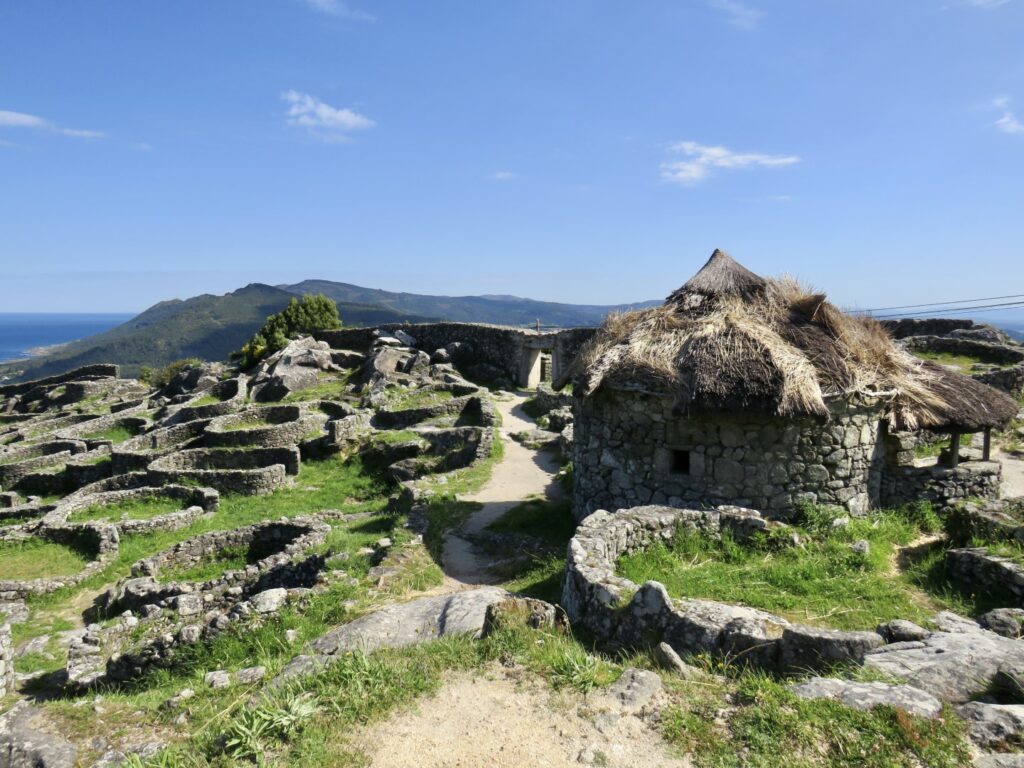
Galicia is Spain, yes—but it’s also something else entirely. It has deep Celtic roots that still pulse through its culture. Bagpipes (brought centuries ago from Africa and India) wail during festivals. On June 23rd, bonfires blaze for the summer solstice, with locals leaping over flames seven times for luck, then rinsing off in seven sacred waters. Pagan rituals blend seamlessly with Catholic traditions—Saint James in Santiago, the Virgin Peregrina in Pontevedra, and ghostly Santa Compaña wandering forests at night.
At Monte Santa Trega, perched 341 meters above the Atlantic at the mouth of the Miño River, we explored ancient castros—Celtic hillfort villages with round stone huts. Archaeologists have linked DNA between Galicians and the Celts of Britain, which might explain why this land feels both Spanish and something otherworldly. Standing there, staring out at the sea, I could see why Romans once thought this was literally the “end of the world.”
Mussels, Barnacles, and Other Seafood Adventures
Galicia is half land, half sea—and the seafood here is legendary. Picture this: 3,500 floating platforms in the rías (estuaries), each one sprouting mussels on ropes, weighed down by granite. Up to 250 kilos of mussels grow on each rope and are harvested after 18–22 months.
Then there are barnacles—or percebes. Harvested by daredevils clinging to wave-battered rocks, they’re expensive, ugly, and a highly prized delicacy. Galicians cook them quickly in seawater until they taste like a shot of the ocean itself.
At one dinner, I sampled caldo gallego, a hearty broth of turnip greens, potatoes, and salt pork—known to “revive the dead.” Between that, salads studded with pomegranate, chestnut-laced cakes, and glasses of Albariño, I found Galician cuisine to revive the living too.
The Cíes Islands: Spain’s Caribbean (With Seagulls)
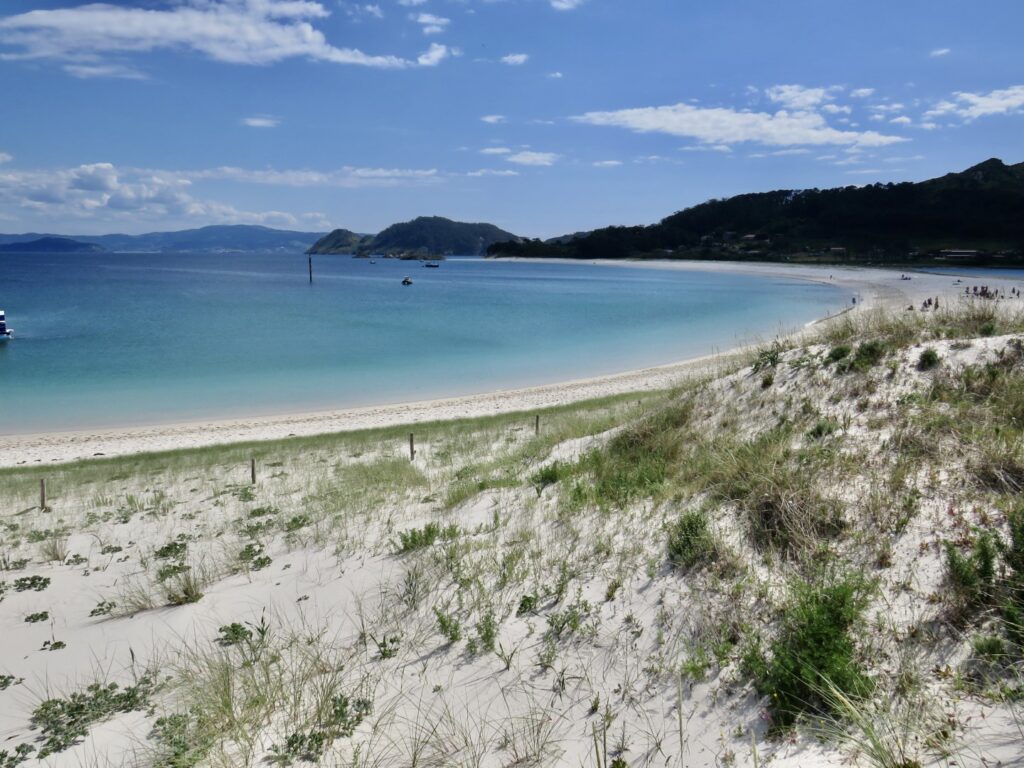
If Galicia’s mainland wasn’t already seductive enough, its offshore islands seal the deal. Legend says Sir Francis Drake hid treasure in these coves, and looking at the sparkling water, I could believe it.
The Cíes Islands, part of a national park, are a ferry ride from Vigo and boast Playa de Rodas—voted one of the best beaches in the world by The Guardian. With turquoise waters, fine white sand flecked with mica, I understood the ranking. Unfortunately, it caused overtourism, and now there is a strict cap of 1,800 visitors per day in summer. After all, it is a national park and protected area for roosting waterfowl, including yellow-legged gulls.
Santiago de Compostela: Journey’s End
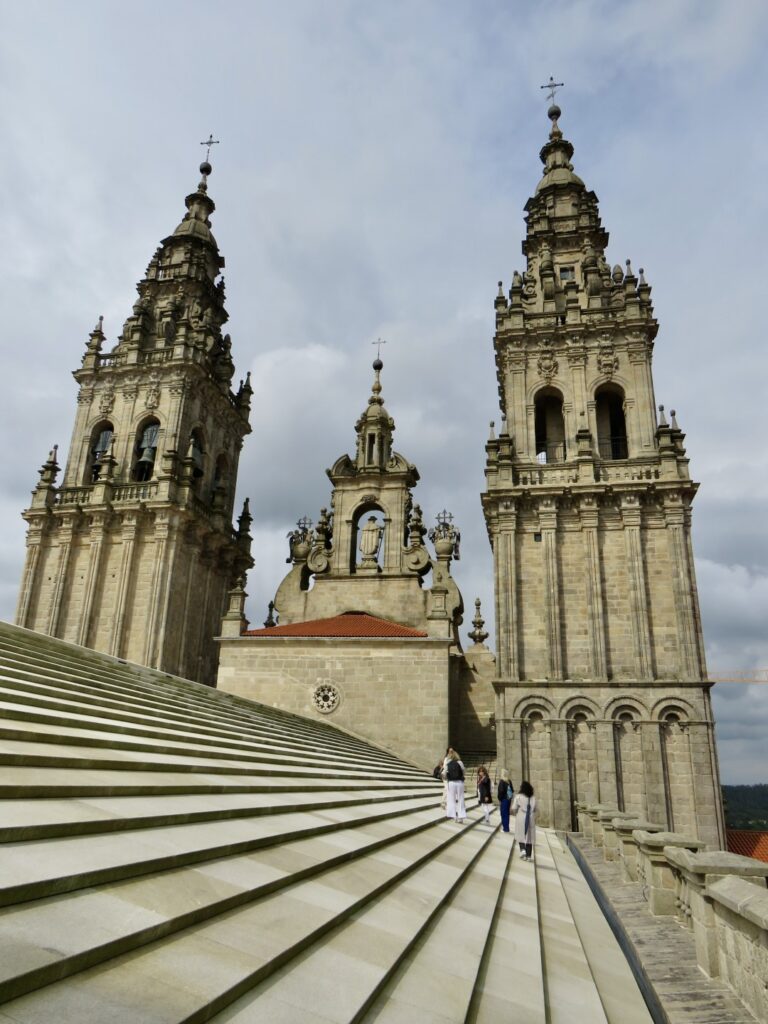
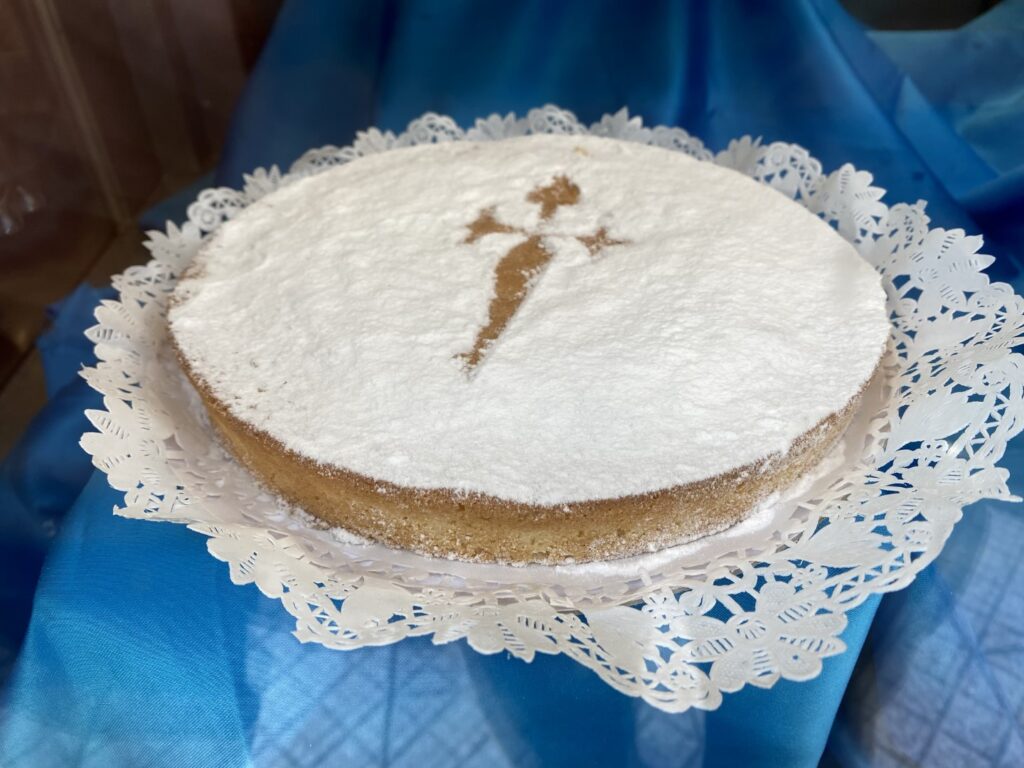
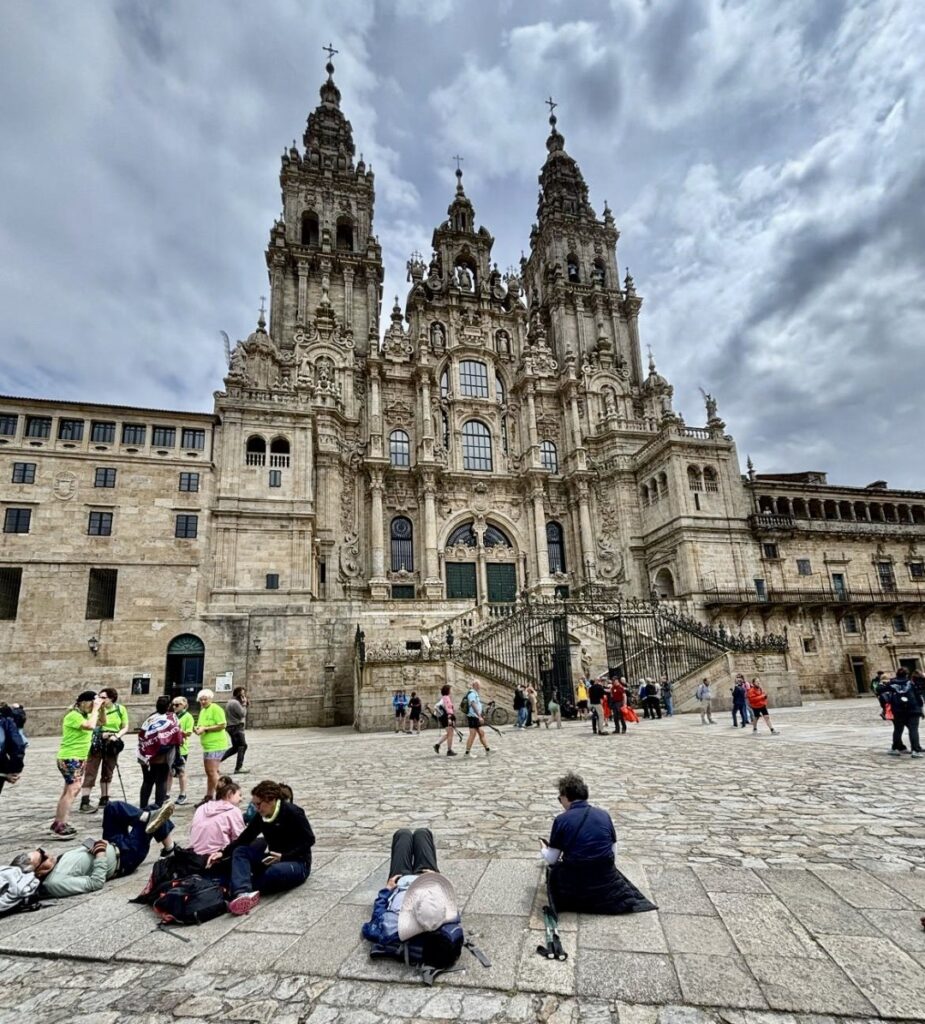
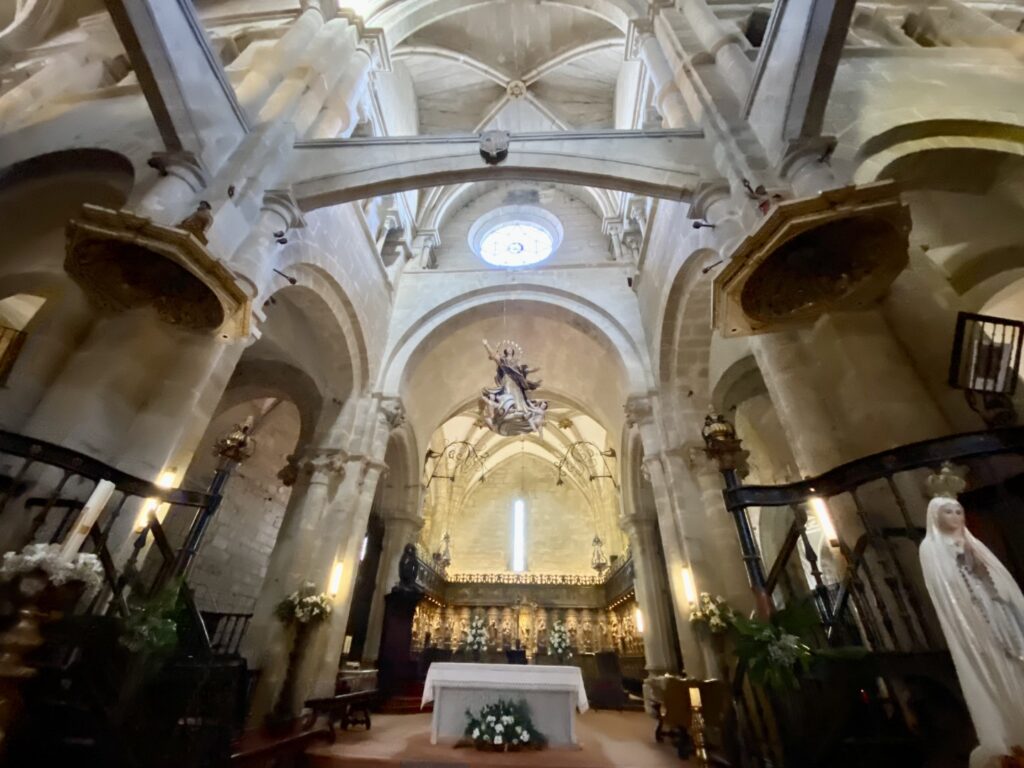
Finally, we reached Santiago de Compostela, the capital of Galicia and endpoint of the Camino de Santiago pilgrimage. The city hums with energy: tired but elated pilgrims, bell towers chiming, the smell of octopus wafting from kitchens.
Inside the cathedral, pilgrims embrace the statue of Saint James, often with tears streaming down their faces. Even non-religious travelers can feel the weight of centuries here. On the rooftop tour, I looked out over the granite rooftops and felt the Atlantic breeze. For a moment, I understood why people walk hundreds of kilometers just to arrive at this spot: it’s not about the destination, it’s about the transformation along the way.
And then, naturally, we went to eat. Lunch at the Parador—once a pilgrim hospital—brought mussels with apple slices, pork crepes, and sea bream, followed by Santiago cake.
“In Galicia,” Maria reminded us, “when we are sad, we eat. When we celebrate, we eat.” I couldn’t think of a better philosophy.
By the time I left, I felt like I’d uncovered a secret. Galicia is Spanish, yes, but also proudly itself—wild, mystical, generous, and delicious.
WHERE TO STAY
- Parador Santo Estevo: Former monastery in the heart of the Ribeira Sacra.
- Parador de Baiona: Site of a historic fortress overlooking the Rías Baixas.
- Parador Santiago de Compostela: Hostel of the Catholic Kings.
- Parador de Cambados: Tranquility in the capital of Albarino.
- Novavila Wine Hotel: A family property with 6 rooms and tasteful décor near Pontaverde.


